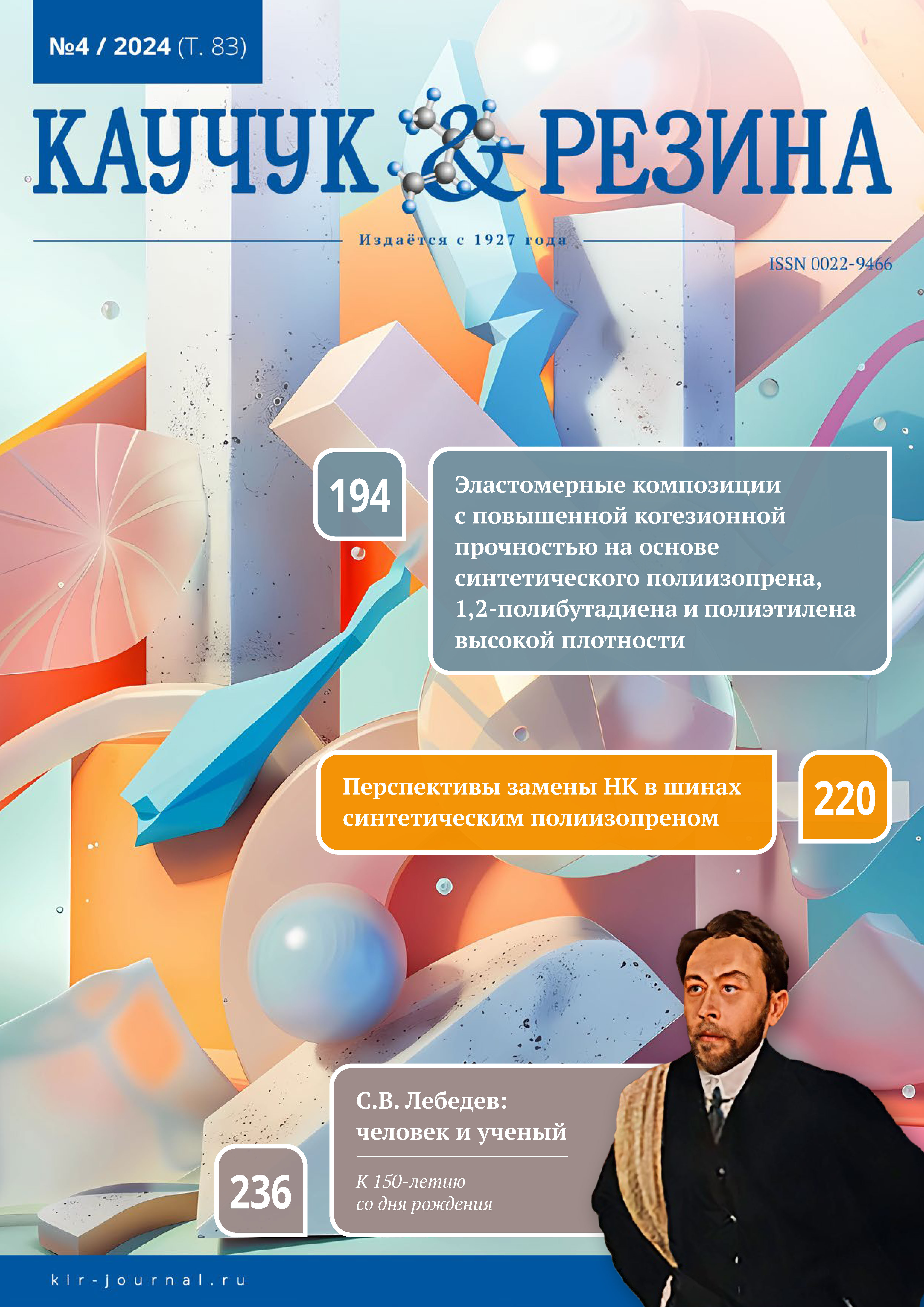The Effect of Plasticization of Isoprene Rubber on the Bond Strength of Brecker Rubber to Metal Cord. Part 2. Influence of the Chemical Nature of Macromolecules
Published 2024-08-25
How to Cite
Abstract
The article presents the results of a study of the effect of macromolecules of different chemical nature of isoprene rubber (SKI-3), formed during its plasticization, on the amount of adhesion (A) of the breaker rubber to the metal cord (m/с). As a result, equations were obtained describing the value A of a brecker rubber, containing macromolecules of only a certain chemical type, depending on the temperature and time of plasticization of SKI-3. It turned out that alkyl and allylic macroradicals of SKI-3 significantly increase A to m/с. At the same time, the oxymacroradicals, appearing during mechanoactivated oxidative destruction, reduce the value of A. The recombination of different types of macroradicals, formed during the plasticization of SKI-3, has little effect on the value of A. Equations have been obtained that allow calculating A depending on the molecular weight and degree of destruction of SKI-3 macromolecules of different chemical nature.

